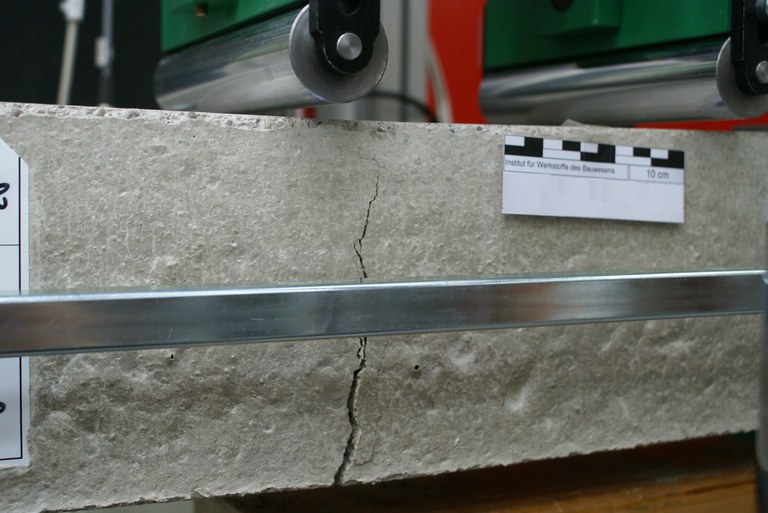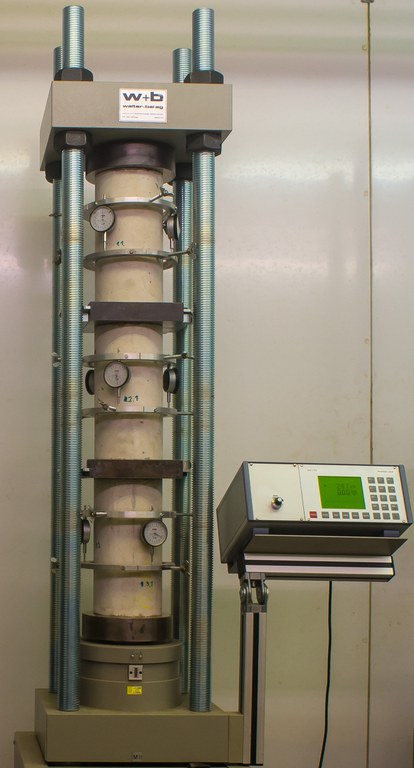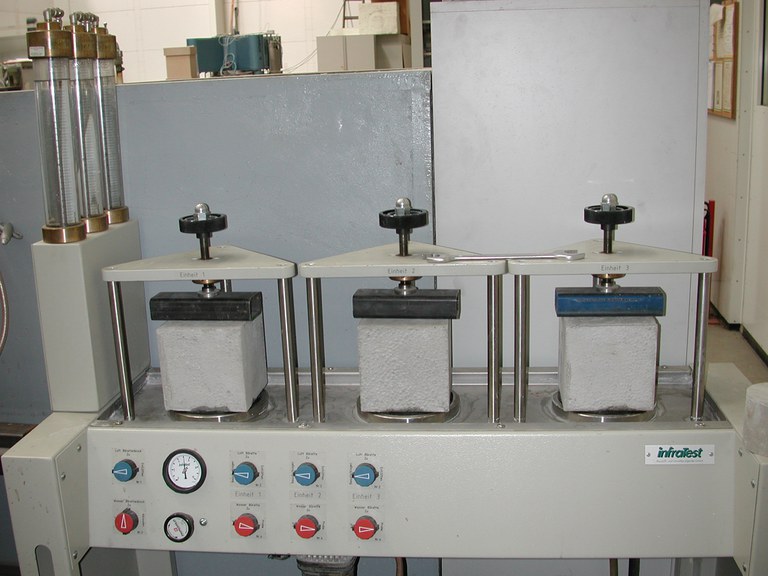Tests on solid specimens
The lab is capable of running various types of mechanical tests. The capacity of the testing frames ranges from 5 kN to 5 MN. Compressive, tensile and flexural strength tests are possible. Special rigs can be used for tests under sustained loads.
Mechanical testing
Strength tests
Three servo-hydraulic testing machines are available for mechanical tests with capacities in compression ranging from 200 kN to 5 MN. They are equipped also for uniaxile tension and for rupture tests. Additionally, they are equipped for rupture tests as well. Two further very versatile servo electrical universal testing frames with maximum loads of 5 kN and 50 kN complete the equipment. The smaller frame is especially equipped for testing elastomers with a large displacement measuring device MFN-A 4/500 mm ranging from 4 to 500 mm with a high resolution and hydraulic clamps for secure fixture of the specimens.

Figure: Cracked steel fiber reinforced concrete bar after a rupture test
Tests under sustained loads
Three test rigs are capable of running tests under sustained loads independently in a climate room with three specimens at a time. The rigs permit the observation of creep behavior of various conctruction materials.
Weight loss due to drying and the resulting shrinkage are measured simultaneously on corresponding unloaded sprecimens.

Figure: Creep test with three concrete specimens in a rig for tests under sustained loads
Further investigation
Water penetration under pressure
The tightness of concrete under high water pressure is important for under water concrete structures, or concrete in contact with ground water. Water penetration depth under controlled pressure can be determined in two water penetration test stands.

Figure: Water penetration test stand with concrete cubes installed for testing
Frost and freeze-thaw resistance
Specimens are exposed to controlled temperature cycles in a climate chest. Different temperature profiles and storage media liek water or salt solution can be chosen depending on the requirements. The resulting outer damage is measured gravimetrically as scaling. The inner damage is determined by using ultrasonic measurements and evaluating Young's modulus.